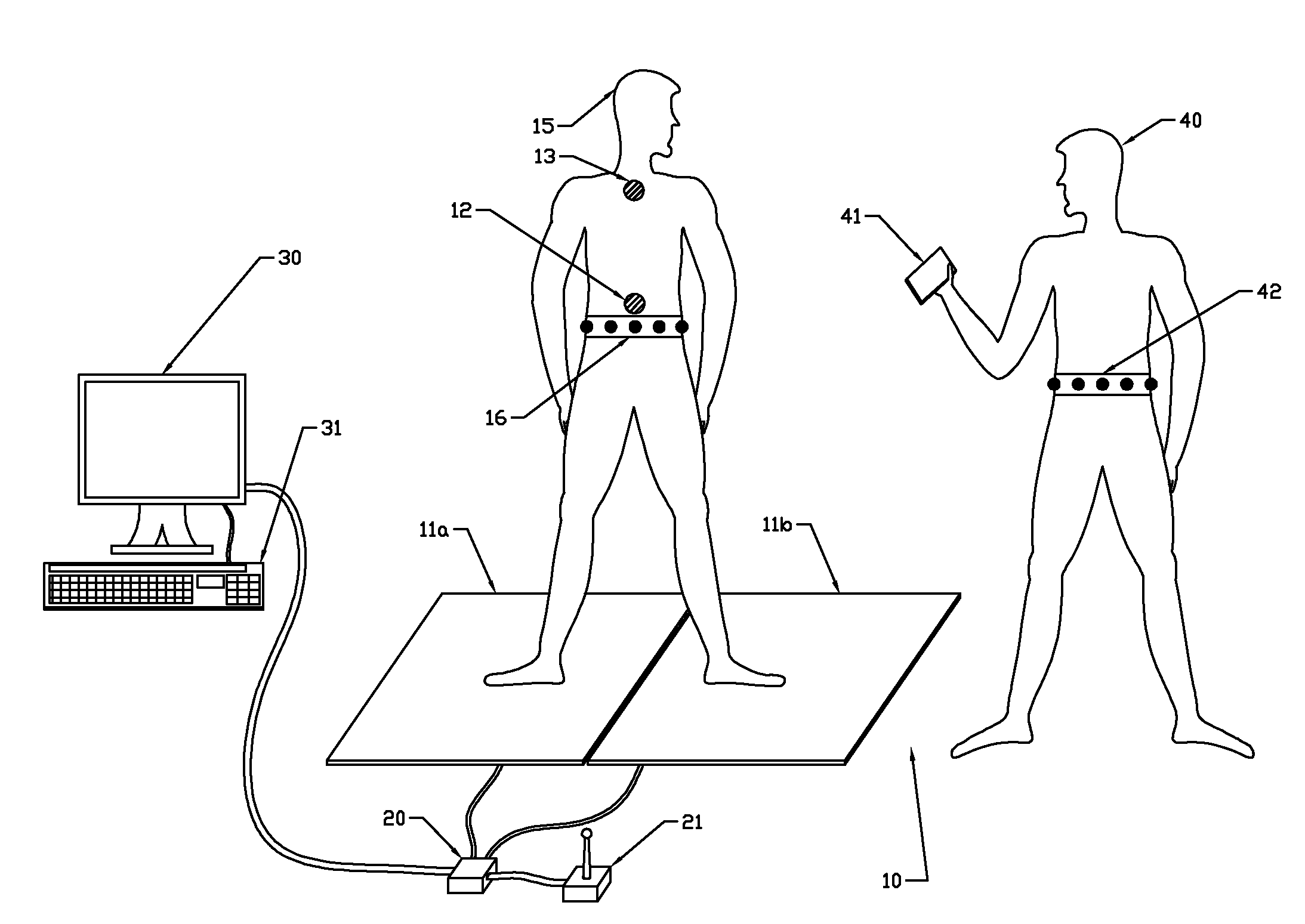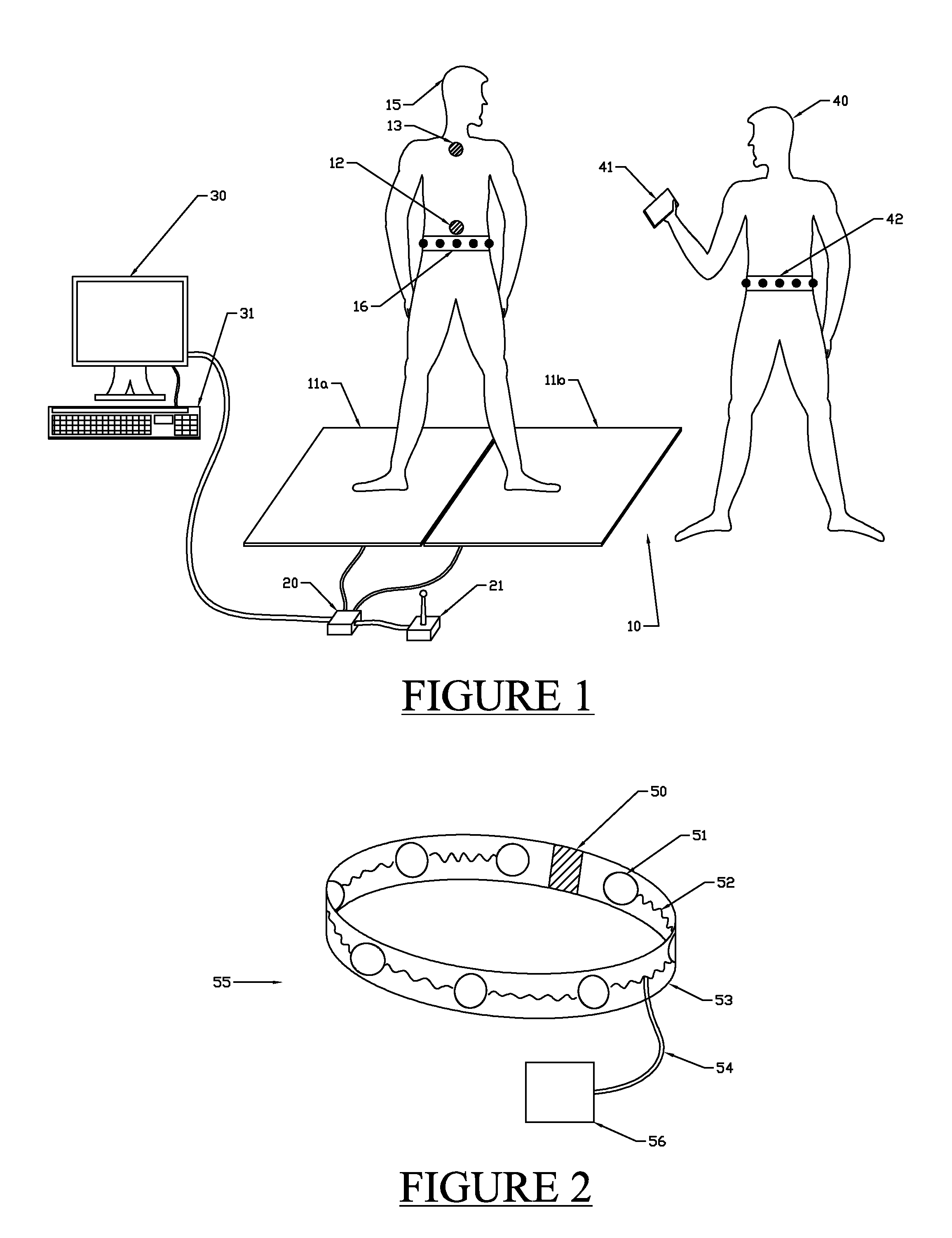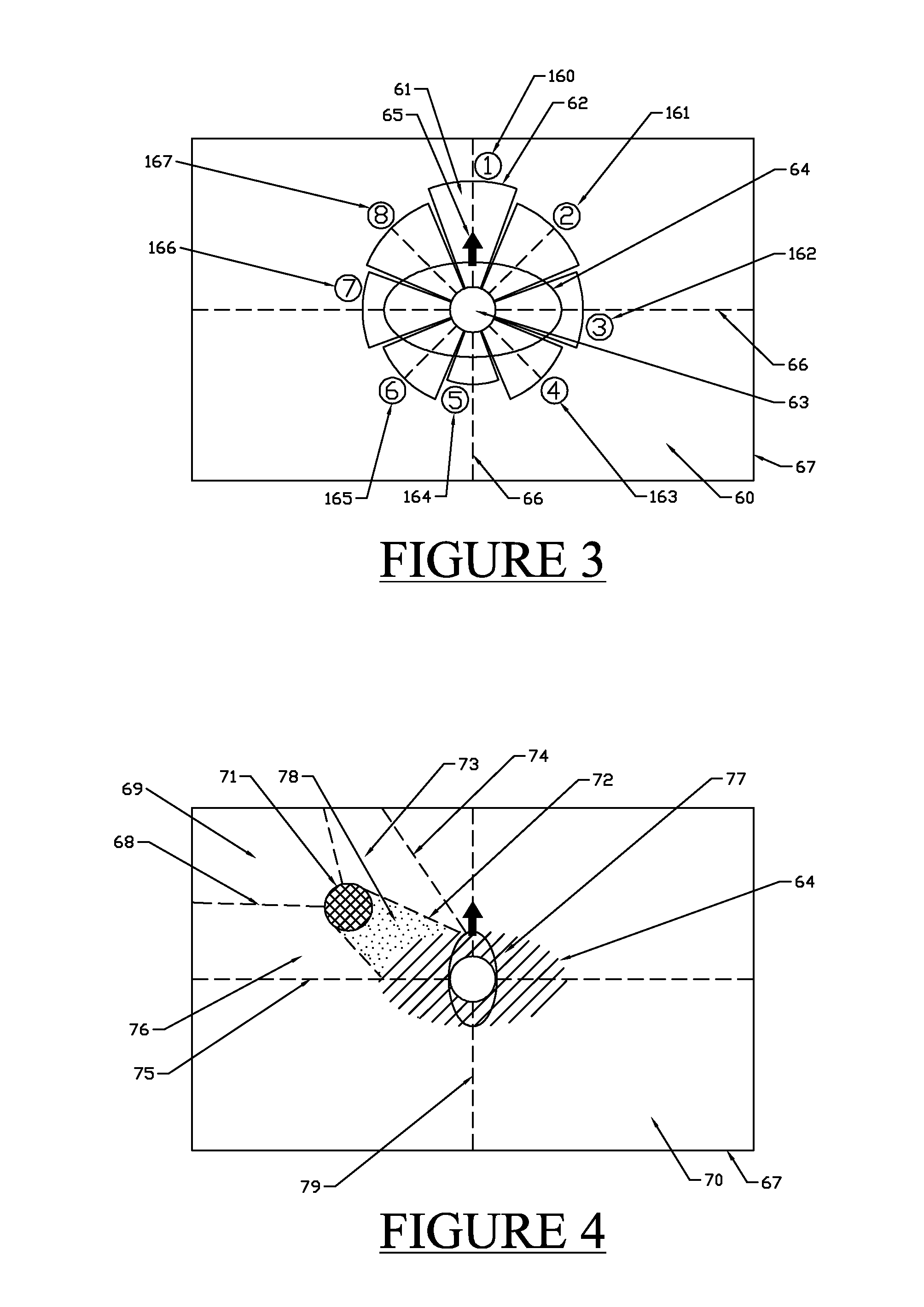System and method for vibrotactile guided motional training
a technology of motion training and guided motion, applied in the field of system and method of providing a subject with motion training, can solve the problems of increasing the potential for falls, debilitating disequilibrium and movement and balance disorders, damage to any part of the central or peripheral nervous system, etc., and achieve the effect of minimizing varian
- Summary
- Abstract
- Description
- Claims
- Application Information
AI Technical Summary
Benefits of technology
Problems solved by technology
Method used
Image
Examples
Embodiment Construction
[0033]Embodiments according to aspects of the present invention provide systems and methods for providing a subject with motional training. In particular, embodiments provide motional training by providing a subject with vibrotactile feedback in response to an attempt by the subject to perform predetermined motions.
[0034]The set of predetermined motions may correspond to a functional task, while each predetermined motion corresponds to a sub-task. The act of moving from a sitting position to a standing position is a known and well documented functional task. Other examples include standing, reaching for an object, getting out of bed, and tasks related to gait.
[0035]The embodiments provide spatial orientation and / or timing feedback cues via a vibrotactile mechanism to guide postural and mobility decisions. Real time vibrotactile feedback may be provided to cue appropriate motions by the subject. In addition, such feedback may also be used to correct abnormal movement that can occur d...
PUM
 Login to View More
Login to View More Abstract
Description
Claims
Application Information
 Login to View More
Login to View More - R&D
- Intellectual Property
- Life Sciences
- Materials
- Tech Scout
- Unparalleled Data Quality
- Higher Quality Content
- 60% Fewer Hallucinations
Browse by: Latest US Patents, China's latest patents, Technical Efficacy Thesaurus, Application Domain, Technology Topic, Popular Technical Reports.
© 2025 PatSnap. All rights reserved.Legal|Privacy policy|Modern Slavery Act Transparency Statement|Sitemap|About US| Contact US: help@patsnap.com



